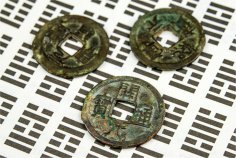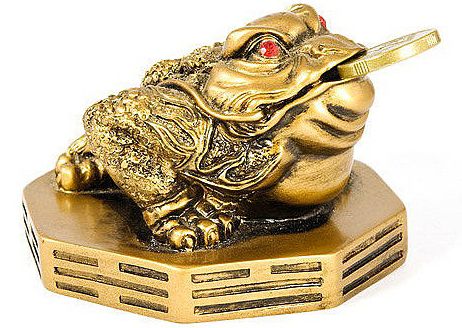
Knowing your future is a desire of many, especially creative people inclined to mysticism. The Chinese Book of Changes I-Ching is one of the most popular fortune-telling methods in the last 15-20 years. Many fortune-telling books published since the end of the 80s, in addition to dream books and horoscopes, also contain a section on fortune-telling using the Chinese book I-Ching.
In Chinese culture, fortune telling is just one of the common everyday uses of the I Ching symbols. In fact, it is a scientific and philosophical treatise describing all the mechanisms and principles of the existence of the Universe. It is four and a half thousand years old, and it is the oldest book of mankind.
In the 3rd century BC, the Chinese Emperor Qin Shi Huang Dio united China and built the Great Wall of China. However, he also earned a bad reputation for destroying scientists and people engaged in science, and all the books they wrote. The only book he did not dare to lay a hand on was the I Ching. I means “change”, and Jing means “book”.
The main idea of the book is presented in the octagon Bagua . Its appearance is familiar to visitors of shops with oriental souvenirs. Its origin is mystical.
According to legend, one of the courtiers of Emperor Fu Xi saw a giant black turtle swim out of the Lo River, with mysterious signs depicted on its shell. They were copied, and it became clear that they had a certain system. Intermittent and continuous lines formed symbols called trigrams, and they were all different from each other. There were eight signs, and over time, the oval shell of the turtle began to be depicted as an octagon, in Chinese – bagua. On each side of the octagon there is one symbol. Each trigram symbol corresponded to its own cardinal direction and element.
The trigram Li is associated with fire and the south, the north is the trigram Ka. These are two opposite principles. The other trigrams correspond to the east, west, northeast, northwest, southeast and southwest. And also to the elements: earth, wood, metal, air and water. The trigrams and edges of Bagua schematically depict the Universe. In the center of Bagua is the so-called Taoist monad, a symbolic interweaving of the primordial principles of Yin and Yang, symbolizing the unity of earth and sky.
If you, having succumbed to the fashion for the East, have ever thought about acquiring such an octagon, pay attention to the fact that there are two types of it . The octagon of Bagua of the late heavens and the octagon of Bagua of the early, or previous, heavens.
According to the I Ching, the Early Heavens period is the period before the appearance of man on Earth, and the Late Heavens period begins with the appearance of man. It is believed that the Late Heavens Bagua contains information about man and the world around him, which man can perceive with the five senses: sight, touch, smell, taste, and touch. The Early Heavens Bagua describes nature and the material universe, as well as worlds that exist beyond the capabilities of human perception, including the otherworldly.
It is better to place the Bagua of the early heavens on the outside of your home to protect the world in which a person lives from another world – the world of the dead. If you have the Bagua of the late heavens in your home, the energy carried by this object will cleanse the psychological atmosphere in the room from negativity. Mutual understanding and harmony will prevail in such a house.
Anyone can tell the difference between these two octahedrons. The Bagua of the early heavens has a trigram consisting of three solid lines on the upper edge, and three broken lines on the lower edge. The Bagua of the late heavens has two solid lines on the upper edge, separated by a broken line, and on the lower edge, on the contrary, two broken lines, separated by a straight line.
In ancient China, it was believed that the Book of Changes contains complete encrypted information about man and the Universe. And all this can be expressed in a combination of just two lines – straight and broken. And so that these combinations never repeat.
For many years in Europe, this was considered another Eastern legend, until in 1673, the German physicist, mathematician and philosopher Gottfried Wilhelm Leibniz made a computing device – the world's first mechanical calculator. Its basis, as in the I Ching, was the binary system. All calculations were based on a mechanism consisting of toothed wheels, on the teeth of which the ball fell or did not fall. The duality of the system in this mechanism was that there were only two options for action – falling or not falling.
It is the binary principle of calculation that is still used in all modern digital technologies. The algorithms and programs of each computer are initially written using only two digits – one and zero in various combinations. It is incredible, but four and a half thousand years before the appearance of the first computer, the Chinese were able to use the basic foundations of computer science!
The book also surprises modern doctors. Modern research in information medicine proves that the ancients knew quite a lot about what our modern science is only discovering. I-Ching interprets Yang as a source of active fiery energy, and Yin as a source of passive, calm earth energy.
It is not known for certain when exactly the I Ching began to be used for fortune telling, but manuscripts indicate that Confucius used it to tell fortunes two and a half thousand years ago. The I Ching appeared in Europe in the 12th-13th centuries. Christian monks were the first Europeans to conduct a large-scale and detailed study of the I Ching in order to determine the principles of the existence of nature and the Universe. The original interpretations of the line combinations are little known in Europe; various adaptations are more common, where the allegorical formulations used in the Book of Changes are accompanied by explanations adapted to the lifestyle of Europeans.
One of the most common variants of fortune telling by I Ching, popular throughout Europe, is the interpretation of hexagrams , which appeared in the late 60s of the 20th century. It was proposed by the Hungarian writer, playwright and philosopher Duha Hernadi.
For fortune telling, take three identical coins of any denomination, the only important thing is that the coins must be the money of the country in which the fortune telling takes place. Clearly formulate the question out loud or to yourself, simplifying it as much as possible so that it cannot be interpreted in two ways. If two or three heads fall out, draw a solid line on a sheet of paper, if most of the heads, then a broken line.
This action is repeated six times, and each subsequent line is drawn over the previous one to obtain a hexagram – a symbol of six horizontal lines, solid or broken. The six lines are divided into three upper and three lower, and then the value of the dropped combination is found using a special table. According to the rules, one or at most two questions can be asked per fortune-telling.
And most importantly, after receiving an answer, regardless of the result, you must mentally or out loud thank I Ching for the advice.
Fortune telling by the Book of Changes





